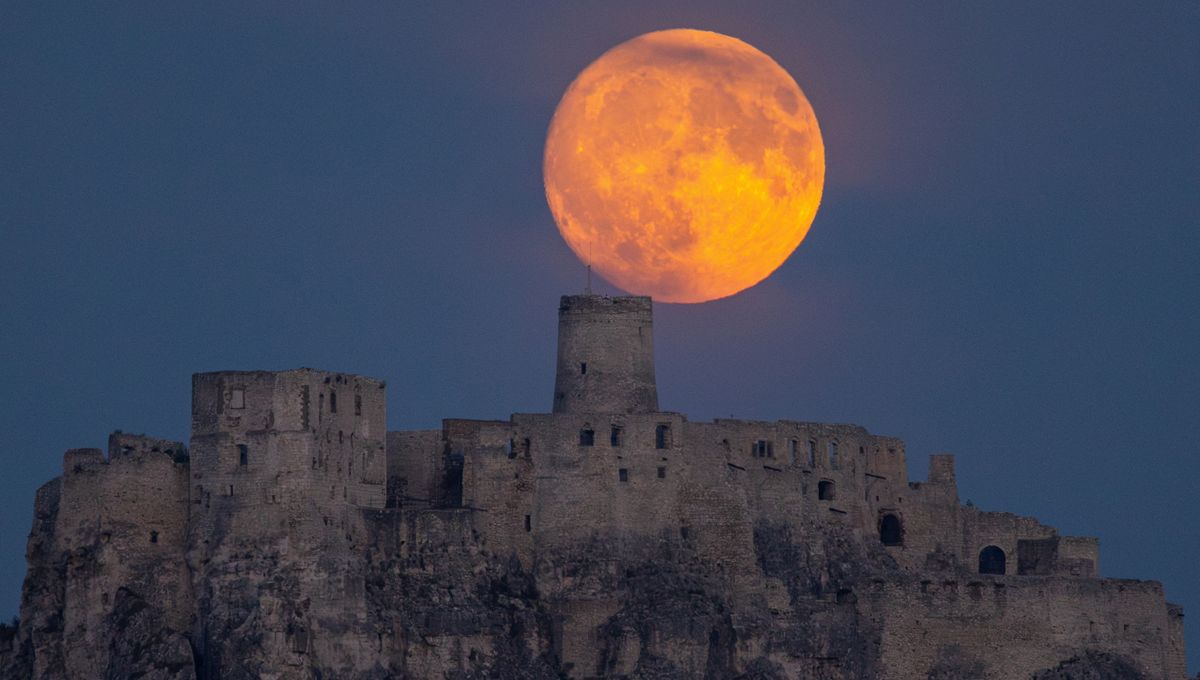
It’s a good month for astronomical observing, but over the next few nights, an unusually close full Moon will make most of the other sights very difficult to see. It’s just as well it will be so impressive itself.
Our evening skies are currently graced by the best comet for many years and the opportunity to see Venus, Saturn, and (with difficulty) Mercury. Those with the patience to stay up later, or wake before dawn, can add Jupiter and Mars, to complete the naked-eye planet set.
However, tonight and tomorrow, all but the brightest of these will look well off their best as the full Moon dominates the night sky. The Moon will be full at 11:26 am GMT on Thursday, October 17. Europe, Africa, and much of the Americas won’t get to see it at its fullest, but both tonight and tomorrow it will be close enough to full you’ll struggle to tell the difference.
Full Moons come along once a month, but this one is what has recently become known as a supermoon, meaning the Moon will be full close to the time when our satellite is closest to us. That means that, clouds allowing, it will appear larger and brighter than average, by about 12 and 15 percent respectively.
The term supermoon has no official designation, but under one definition, there are three or four a year. Supermoons are not all equally large, however. The Moon will reach its closest point to the Earth at 12:48 am GMT on Thursday, so this full Moon is happening less than 11 hours later. A full Moon can still be considered super more than a day off closest approach, and this one will be the closest alignment for the year, though only just beating September’s.
All this makes for a great sight if you have a good spot to watch the Moon rise, where the combination of actual closeness and the Moon illusion can create an impressive effect. It’s also handy if you want to spot nocturnal animals, but it’s an extra reason to be careful on the roads.
If you want to do any other astronomy, however, this is the worst time of the month for it. That’s unfortunate, because both Comet Tsuchinshan-ATLAS and a flurry of meteor showers are giving people with access to dark skies good reasons to look up at the moment.
Don’t be too despondent, however. By the weekend, the Moon will be noticeably waning, and rising later in the night, creating better conditions to look for everything else. If you have a small telescope, that will include an unfamiliar-looking Saturn.
The angle of Saturn’s rings changes relative to us over the course of its 29.4-year orbit. That means that every 14-16 years the rings are edge-on, to the point of being barely visible, and we are getting quite close to that now. A supermoon won’t stop you from seeing the rings looking more like a bar than their usual shape, but the view will be clearer once it’s gone.
Besides the unexpected view, there is historical interest to this. When Galileo first turned his telescope to Saturn, he saw what he called “ears” that we now know were the rings. He looked again two years later, and couldn’t see them – because his telescope was not powerful enough to make them out when edge-on like they are today.
Tides are also highest when the Moon is full, because the bulges created by the Moon and Sun combine. The Moon’s pull is also stronger when it is closer, so supermoons can be associated with tides a few centimeters higher than normal.
The geography of coastlines often means this peak tide comes days after the supermoon. Under most circumstances, small tidal increases don’t matter, but it’s bad news if you’re in a low-lying coastal area affected by recent heavy rains, like Florida is at the moment.
Source Link: This Year’s Brightest Supermoon Will Interrupt Some Great Dark Sky Observing